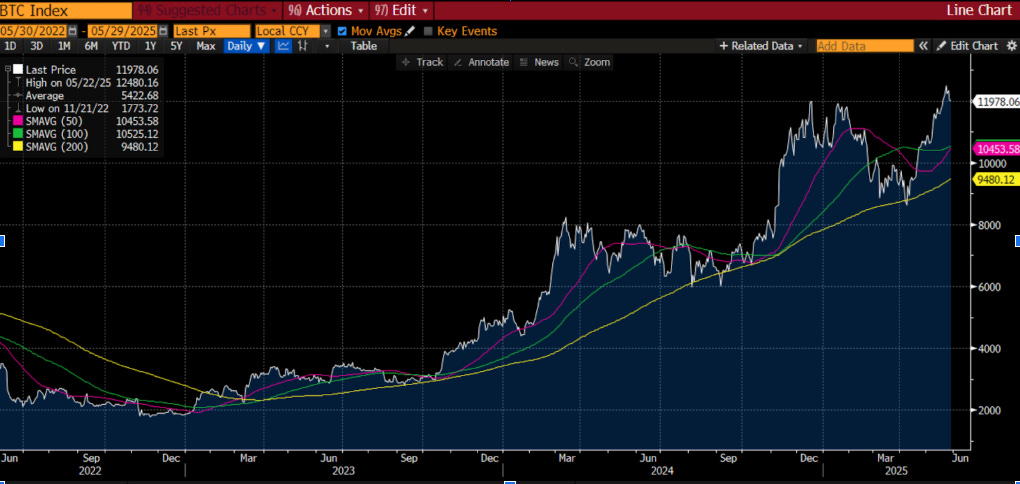Vincent Deluard, StoneX’s Global Macro Strategist, is no stranger to Haymaker readers. He has been correct in recent years that uncontrolled U.S. government spending has been highly supportive of the economy and, indirectly, stock prices. This is notwithstanding the long-term negative implications of $2 trillion annual deficits. In his text that accompanied the above graphic, he asked why the federal defense budget should receive a $150 billion increase this year, or roughly 20%. He also pointed out that expenditures by the Department of Veterans Affairs are also running 20% higher than fiscal 2024 even though the number of veterans is at a 40-year low. How long federal spending can remain on its present trajectory without triggering severe repercussions is among the most pressing questions investors face.
Most media sources trumpet the rapid growth in electric vehicles (EVs) while typically overlooking that it is being driven (sorry!) by hybrids.
As you can see above, pure EV sales have been flat over the last couple of years. While plug-in hybrid sales have also stagnated, electric hybrids continue to experience nearly vertical growth. This is the part of the EV market where Chinese automakers like BYD have been aggressively boosting production and cutting prices.
Because hybrids consume more palladium than even internal combustion engines, this has highly positive implications for its demand, and to a lesser extent, platinum's. Yet, most market participants believe the increasing market share of EVs is inhibiting demand for Platinum Group Metals (PGMs) since pure EVs consume very little of them.
While platinum prices have perked up, and are actually not far from achieving a breakout to a three-year high, palladium remains neglected with its price bumping along below $1000/ounce.
“A recent Fed study showed that when Chinese banks lend to emerging markets, they are increasingly doing so in their own currency rather than the dollar.” -Barron’s reporter Reshma Kapadia, in the May 31st, 2025 edition
“I do believe we’ve entered a new dollar bear market, and in that environment, you typically want to favor real assets over financial ones.” -Jesse Felder, from his April 23rd, 2025, Wealthion appearance
“I wish I was in the land of cotton,
Old times there are not forgotten,
Look away! Look away! Look away!
Dixie Land.
In Dixie Land where I was born in,
Early on one frosty morning,
Look away! Look away! Look away!
Dixie Land.
Then I wish I was in Dixie,
Hooray! Hooray!
In Dixie Land, I take my stand
To live and die in Dixie”
-Daniel Emmett, sourced here from CelebrateBoston.com
I Wish I Was(n’t) in DXY
DXY, pronounced as “Dixie” in Wall Street lingo, is the most widely tracked measure of the U.S. dollar’s value against other leading fiat currencies. One could cogently argue that the ultimate comparative currency should be gold, which J.P. Morgan, the man, once said was the only real money. Everything else, in his no-nonsense view, was credit.
Of course, New-Agers would swap Bitcoin versus either gold or the DXY. On that basis, Bitcoin’s extraordinary bull move since 2022 would indicate the U.S. dollar is in the midst of an equally extraordinary bear market. As you can see in the chart below, Bitcoin is up almost 600% since the summer of 2022. This means from that point the dollar has lost about 83% of its value versus the King of Crypto.
Price Chart of Bitcoin Over the Last Three Years
It's fair to say that Bitcoin is much more than just an alternative currency. It possesses a speculative element to it that makes it a prime beneficiary of “risk-on” environments, such as have dominated since the spring of 2020. That was when the Fed and the U.S. Treasury went into hyper-liquidity-creation mode. Using 4/1/2020 as a return calculation starting point, Bitcoin is up by a factor of 17.








